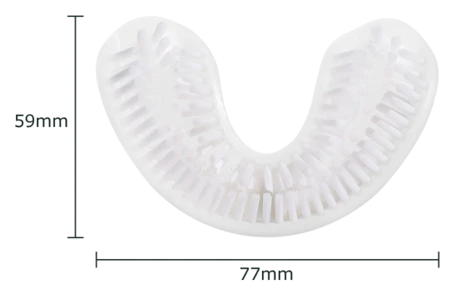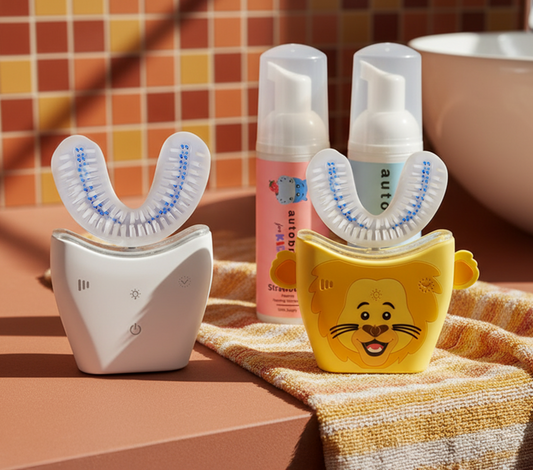
Exploring the Benefits of Sensory Toothbrushes
Oral hygiene is key to overall health, but for individuals with sensory sensitivities, brushing can be a challenge. The sensory toothbrush is here to change that. These brushes are made for people with sensory processing issues. They provide a more comfortable, effective, and enjoyable brushing experience. In this article, we'll explore how sensory toothbrushes can make a real difference in your oral care routine.
What Is a Sensory Toothbrush?
Sensory toothbrushes are specially designed to cater to individuals with sensory sensitivities, particularly those with autism or sensory processing disorders. These toothbrushes do more than just clean your teeth. They include features that make brushing more comfortable and focused. This makes the whole experience easier and less stressful.
What Makes a Toothbrush “Sensory?”
Several features set sensory toothbrushes apart from regular toothbrushes:
- Soft, adaptive bristles that provide a gentle brushing experience.
- Ergonomic handles designed for easy grip and better control.
- Vibrotactile feedback to help users focus on the task at hand.
These thoughtful design elements make brushing easier and more comfortable, reducing anxiety and improving consistency.
Who Benefits from Sensory Toothbrushes?
Sensory toothbrushes are particularly helpful for:
- Children with sensory processing challenges: They make brushing less overwhelming.
- Parents: They provide a tool to help kids build good hygiene habits.
- Anyone seeking a more comfortable brushing experience: Sensory toothbrushes offer a personalized approach that regular brushes don't.
Why Traditional Toothbrushes Can Be Difficult
For many people with sensory sensitivities, regular toothbrushes can be a source of discomfort. The stiff bristles, the awkward handle, and the noise all contribute to making brushing an unpleasant task. Sensory toothbrushes address these challenges by focusing on comfort, making oral hygiene easier and less stressful.
How Sensory Toothbrushes Help
Sensory toothbrushes go beyond just cleaning teeth. By offering a more enjoyable brushing experience, they promote:
- Better oral health: Regular use helps reduce the risk of cavities and gum issues.
- Less anxiety: The design minimizes discomfort, lowering the emotional barriers to consistent brushing.
- Positive psychological effects: These toothbrushes foster confidence and independence, boosting self-esteem.
Key Features of Sensory Toothbrushes
What makes sensory toothbrushes so effective? Here’s a look at their standout features:
- Bristle variations: With softer bristles and smaller brush heads, these brushes ensure a gentle, effective clean.
- Customizable designs: From handle shapes to bristle patterns, you can tailor the brush to your needs.
These design elements aim to make brushing not just a task, but a comfortable, engaging experience.
How to Choose the Right Sensory Toothbrush
Picking the right sensory toothbrush can make a huge difference. When choosing, consider:
- Handle grip: Look for designs that offer a secure, comfortable hold.
- Bristle texture: Softer bristles often work best for sensitive users.
- Size and shape: Smaller, ergonomic designs work better for children or those with limited motor skills.
Reading reviews and consulting with dental professionals can help you find the perfect match.
Featured Product: Sonic U-Shaped Toothbrush for Kids
If you’re looking for the perfect sensory toothbrush for children, the autobrush® Sonic Kids is a fantastic choice. With 58,000 soft nylon bristles and a gentle sonic motor, it’s designed to provide a quick, effective, and enjoyable brushing experience. Its ergonomic grip and playful design make it ideal for little hands, while its built-in brushing song keeps kids engaged. Whether your child struggles with sensory sensitivities or just needs encouragement to brush regularly, this toothbrush makes oral hygiene stress-free and fun. For adults, consider the autobrush® Sonic Pro to enjoy the same comfort and thorough cleaning in a design tailored to grown-up needs.
Age Considerations
Sensory toothbrushes come in different designs for children and adults. For kids, look for smaller, softer brushes. Adults might prefer ergonomic handles that offer more control. Choosing the right size and design ensures comfort and effectiveness.
Making Sensory Toothbrushes Part of Your Routine
Introducing a sensory toothbrush into your daily routine can take time. Start with short, enjoyable sessions and gradually build consistency. Making a calming space can help make brushing a positive experience. You can play soft music or use visual aids. Over time, this will lead to better oral hygiene habits and improved overall health.
Sensory Toothbrushes in Occupational Therapy
Sensory toothbrushes are also a valuable tool in occupational therapy. They help individuals build fine motor skills and gain more control over their brushing technique. Therapists use these tools to support sensory integration and improve coordination, promoting greater independence in personal care.
The Sensory Toothbrush Revolution
Sensory toothbrushes are not just tools; they are innovations. They make brushing easier, more comfortable, and more effective. Sensory toothbrushes are changing how we think about oral care. They focus on individual needs and offer a personalized approach. These toothbrushes are great for kids and adults. They help everyone have a better brushing experience. With these brushes, you can enjoy healthier smiles and feel better overall.












